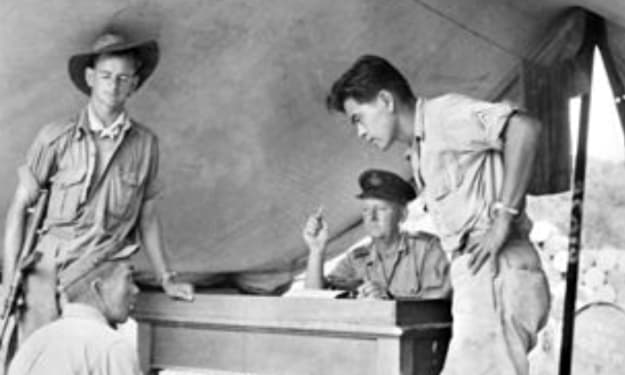Ten interesting stories from the lives of physicists:
These stories provide a glimpse into the essence of each story, encapsulating the significance and impact of the physicist's contribution.
By TriumphantPublished 19 days ago • 3 min read

Photo by Sunder Muthukumaran on Unsplash
- Isaac Newton's Apple: The story goes that Sir Isaac Newton, while sitting under an apple tree, was struck on the head by a falling apple, which led him to ponder the concept of gravity and eventually formulate his law of universal gravitation.
- Marie Curie's Radium Discovery: Marie Curie, alongside her husband Pierre Curie, discovered the radioactive element radium by isolating it from uranium ore. This groundbreaking discovery earned her the Nobel Prize in Physics in 1903, making her the first woman to win the prestigious award.
- Albert Einstein's Thought Experiments: Einstein was known for his vivid thought experiments, one of the most famous being his visualization of riding alongside a beam of light, which ultimately led to the development of his theory of special relativity.
- Galileo's Leaning Tower of Pisa Experiment: Legend has it that Galileo conducted experiments by dropping objects of different weights from the Leaning Tower of Pisa to demonstrate that their time of descent was independent of their mass, challenging Aristotle's theories of motion.
- Richard Feynman's Challenger Investigation: Physicist Richard Feynman played a key role in uncovering the cause of the Space Shuttle Challenger disaster in 1986. He famously demonstrated the O-ring failure that led to the explosion using a simple glass of ice water during a televised hearing.
- Stephen Hawking's Black Hole Theory: Despite being diagnosed with ALS at a young age, Stephen Hawking made significant contributions to theoretical physics, notably his work on black holes. His groundbreaking theories reshaped our understanding of the universe.
- Enrico Fermi's Manhattan Project: Enrico Fermi was a key figure in the Manhattan Project, where he oversaw the first controlled nuclear chain reaction in 1942, paving the way for the development of atomic bombs.
- Max Planck's Quantum Theory: Max Planck's discovery of the quantum nature of energy revolutionized physics. His proposal of quantized energy packets, or "quanta," laid the foundation for quantum theory and earned him the Nobel Prize in Physics in 1918.
- Niels Bohr's Model of the Atom: Niels Bohr's model of the atom, which incorporated the idea of quantized energy levels, was a significant advancement in atomic physics. His work laid the groundwork for our modern understanding of atomic structure.
- Werner Heisenberg's Uncertainty Principle: Werner Heisenberg's uncertainty principle, formulated in 1927, states that the more precisely the position of a particle is known, the less precisely its momentum can be known, and vice versa. This principle fundamentally changed our understanding of quantum mechanics.
- Erwin Schrödinger's Cat Paradox: Erwin Schrödinger, a pioneer of quantum mechanics, proposed the famous thought experiment known as "Schrödinger's cat." This paradox illustrates the bizarre consequences of quantum superposition, where a cat inside a sealed box can be simultaneously alive and dead until observed, challenging our classical intuitions about reality.
- Michael Faraday's Electric Generator: Michael Faraday, a self-taught physicist, discovered electromagnetic induction, which forms the basis of electric generators and transformers. His experiments with magnets and coils of wire demonstrated the interconversion of mechanical energy and electrical energy, leading to the development of electric power generation. Satyendra Nath Bose and Bose-Einstein Statistics: Satyendra Nath Bose collaborated with Albert Einstein to develop a new statistical mechanics approach, now known as Bose-Einstein statistics. This theory describes the behavior of certain particles, such as bosons, at extremely low temperatures and has implications for the study of superfluidity and superconductivity.
- Nikola Tesla and Wireless Energy Transmission: Nikola Tesla, a brilliant inventor and physicist, explored the possibilities of wireless energy transmission. In 1899, he conducted a series of experiments at his laboratory in Colorado Springs, during which he successfully demonstrated the ability to transmit electric energy wirelessly over long distances. His experiments were pioneering for wireless telegraphy and wireless energy transmission, discoveries that have found applications in numerous modern technologies, from radio to wireless charging.
These stories highlight the diverse and impactful contributions of physicists throughout history.
About the Creator
Enjoyed the story? Support the Creator.
Subscribe for free to receive all their stories in your feed. You could also pledge your support or give them a one-off tip, letting them know you appreciate their work.





Comments
There are no comments for this story
Be the first to respond and start the conversation.